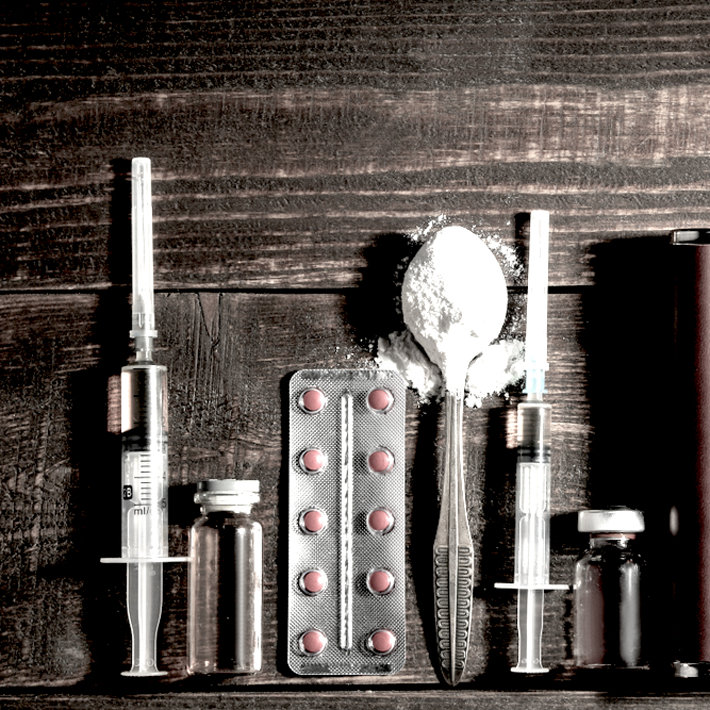The Most Lethal Drugs in the U.S.

According to a U.S. News article, 70,237 drug overdose deaths occurred in the U.S. in 2017. That number was up 10.4 percent from the 63,632 people who died from drug overdoses in 2016. Overdose deaths are on the rise in America, and they have been since the turn of the century. And even though we have known about the drug epidemic for many years, efforts to halt the growth of the crisis have as yet been unsuccessful.
While the rate of the increase in drug overdose deaths, one year to the next, is staying about the same, the types of drugs that are causing the overdoses are fluctuating. And that's concerning because that means an unpredictable future ahead of us if we don’t take control of the situation and reduce the epidemic.
Shifts in Lethal Drugs
From 2014 to 2016, drug overdose deaths soared. That was simply the continuation of a trend that began in 1999 when pharmaceutical companies started mass producing and distributing addictive prescription painkillers
The overdose situation was on the rise in 2017 as well, more or less, just like it was in 2014 through 2016. In 2017, the four drugs that saw the most significant year-to-year increases were fentanyl, heroin, cocaine, and methamphetamine.
But those are just the top four. In that year, several drugs that hadn’t been considered as “serious” threats (at least not severe enough to be on the same scale as other major killers) now suddenly began taking more lives.
What we are beginning to notice is that the drug addiction epidemic is diversifying. Unless we act fast, this will undoubtedly have the effect of creating a more challenging, complex, and unpredictable drug problem.
Following are the ten drugs most frequently involved in fatal overdoses in 2017:
- Diphenhydramine. According to the U.S. News report, there was a 13.8 percent increase in diphenhydramine-involved overdose deaths in 2017. That drug can be found in brand-name medicines like Benadryl, Nytol, and Banophen. Two thousand two hundred eighty-six people died because of diphenhydramine in 2017.
- Hydrocodone. A standard and long-time pain relief option, hydrocodone is also very dangerous. Hydrocodone was involved in about 4.4 percent of drug overdose deaths in 2017. The drug claimed 3,072 lives. The opiate can be found under name brands like Vicodin, Lorcet, and Norco.
- Methadone. Methadone is supposed to help people with opiate addiction. It falls under the category of Medication-Assisted Treatment, sometimes called Replacement Drug Therapy. Methadone is one of the three drugs approved by the FDA to treat opiate dependence. Yet 3,286 people died from methadone overdoses in 2017 and was responsible for 4.7 percent of all 2017 drug overdose deaths!
- Morphine. Responsible for 4,874 deaths in 2017, morphine claimed 6.9 percent of the total drug overdoses for 2017.
- Oxycodone. Oxycodone is a very common painkiller which appears under name brands such as Oxycontin, Roxicodone, Xtampza ER, and Oxaydo. Oxycodone was involved in 8.6 percent of overdose deaths in 2017.
- Alprazolam. Surprisingly, the fifth-highest cause of overdose deaths in the United States in 2017 was not an opiate drug at all. Instead, alprazolam, a benzodiazepine sold under the brand name Xanax, took fifth place. Alprazolam claimed 6,647 lives in 2017.
- Meth. Methamphetamine takes fourth place, with 9,356 deaths in 2017. The number of meth-related deaths rose 38.4 percent from 2016 to 2017. Also, meth was tied to more drug overdoses than any other drug in several regions west of the Mississippi River. All told, meth was responsible for 13.3 percent of overdose deaths in 2017.
- Cocaine. Cocaine was involved in 21.3 percent of overdose deaths in 2017, a noticeable increase from its involvement in 17.8 percent of overdose deaths in 2016. For years during the mid-2000s and into the 2000-teens, cocaine seemed to take the backseat to more popular drugs like opiates and meth. Now it looks like cocaine is making a comeback. In 2017, 14,948 people died from cocaine-related causes.
- Heroin. Heroin claimed 15,982 lives in 2017. Heroin had been on the rise in both usage rates and death rates, beginning in 2010. From 2016 to 2017, overdose death rates from this drug more or less leveled out.
- Fentanyl. Claiming 27,299 lives in 2017, fentanyl was by itself responsible for 38.9 percent of overdose deaths. Just one drug was the cause of more than one-third of all drug overdoses in America in 2017.
As of 2017, fentanyl, heroin, cocaine, and meth are the most lethal drugs in the United States. But that does not mean we should ignore other killers like opiate painkillers, benzodiazepines, and even diphenhydramine-based drugs.
How Can We Reduce Demand and Supply?

The deadliest drugs in America are causing epidemic-level death rates; tens of thousands of lives lost each year. How can we tackle the problem effectively?
The key lies in working towards both rehabilitation and prevention. We have to stop people from becoming addicted to drugs and alcohol. And we have to help those who are already addicted to drugs and alcohol.
- Prevention includes any effort taken to stop drug abuse before it happens. That includes law enforcement efforts to keep drugs out of communities. It includes educating people about the risks and dangers of drug use. It involves going into schools and teaching kids about the harsh side effects of drug experimentation. It consists of utilizing alternatives to addictive medicines.
- Rehabilitation includes actions and efforts taken to help free people who are currently addicted to drugs and alcohol. The use of residential drug and alcohol addiction treatment centers is, by far, the best and safest way to do this.
We cannot resolve the addiction problem in America with just prevention or with only rehabilitation. Neither one can be entirely successful without the implementation of the other. But if we can work together to push for both prevention and rehabilitation, we can overcome the addiction epidemic that has taken America by storm.
Sources:
Reviewed by Claire Pinelli, ICAADC, CCS, LADC, MCAP RAS


